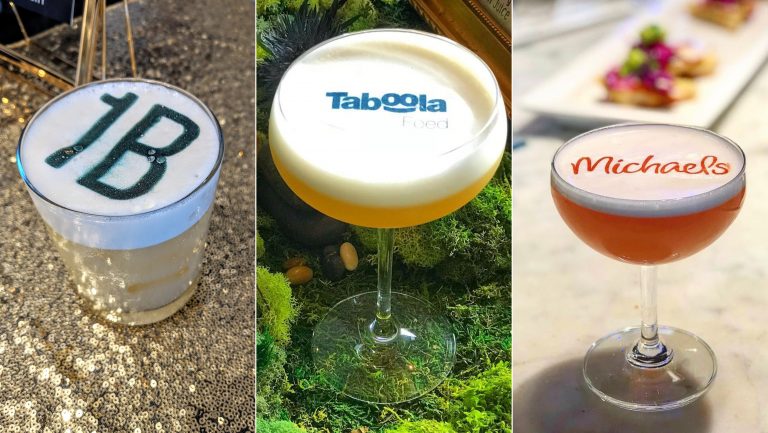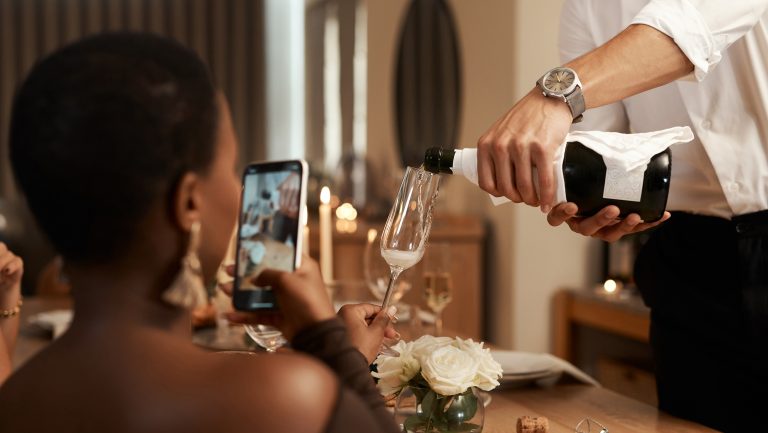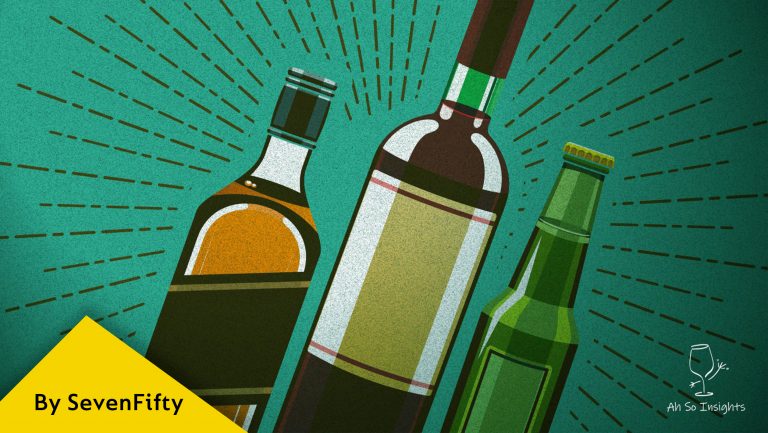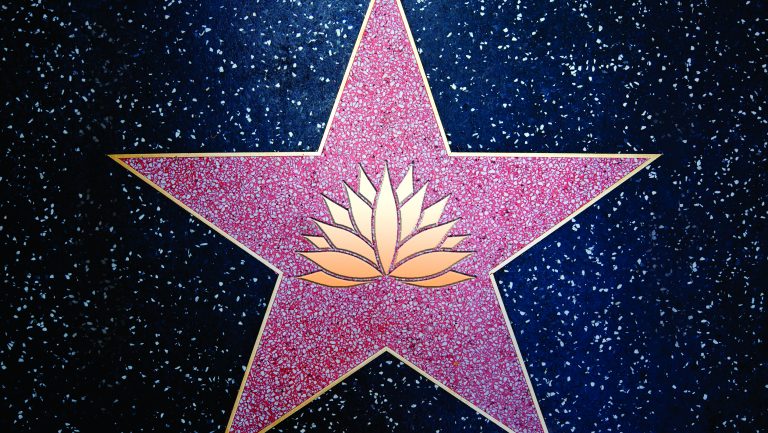The next frontier for marketing just may be your drink. A growing number of companies are working with bars, event planners, and others to place corporate logos front and center on drinks. From Audi’s signature rings stamped into an ice cube to edible-ink prints of logos for companies including Hewlett Packard, Michaels, and Taboola, expect to see more logos floating on top of cocktails.
Companies are embracing this trend because it offers a “wow factor” to the guest who will be consuming the drink—after broadcasting it via Instagram, of course. “There’s value in being able to showcase your brand on social media,” explains Cody Goldstein, the founder of Muddling Memories, a cocktail consultancy that has added logos to cocktails for clients such as Google and Taboola. “Guests immediately take a photo and put it on Instagram,” he says. “When you see the cocktail with the branding of the company, it ties it all together.”
Of course, the concept of branding one’s drink has applications beyond the annual corporate holiday party. It’s a concept that’s ripe for weddings and other social occasions. With the events industry generating an annual $280 billion, according to Meeting Professionals International, even an incremental expense like edible logos for drinks, though, can quickly stack up. (Most companies interviewed for this article say that the extra expense of logos can be added to the bar budget for an event.)

Don’t miss the latest drinks industry news and insights. Sign up for our award-winning newsletters and get insider intel, resources, and trends delivered to your inbox every week.
While some of the technologies used to add logos to drinks (burning images into citrus peel garnishes, for example) aren’t new, others (like edible printing) are more sophisticated and require special equipment but have become more accessible over the past couple of years. Combine that accessibility with the extreme popularity of social media and it’s likely that we’ll see a continued uptick in cocktails as casual canvases to advertise company names, logos, and other images.
Here are some of the ways that logos are now being added to cocktails.
Edible Printing
This option offers the most elaborate presentation choices: Special printers and edible ink are used to print images on thin “sugar sheets” or rounds of rice paper or “wafer paper” that dissolve into drinks, or to print images directly on top of cream or foam.
Sugar sheets like those that bakers use to print, say, a photograph on top of a birthday cake can now be printed more thinly than ever, so they can melt into cocktails or coffee, leaving the image floating on top of the drink.
“It’s a fairly new technology,” explains Van Kolors, a co-owner and the general manager of Ink4Cakes, which launched its Top Melts beverage line about a year ago and now counts restaurant chains including P.F. Chang’s, Bonefish Grill, and Outback Steakhouse, as well as William Grant & Sons distillers, among its clients. “Sugar sheets have been around for 20 years,” says Kolors, “but the FDA didn’t approve this application until quite recently.” Ink4Cakes got into the business of custom printing for beverages to meet customer requests, he says—“People asked to put these on drinks.”
Top Melts produces from 10,000 to 20,000 sugar-sheet circles each month, sized to fit inside cocktail glasses; they typically wholesale for 23 to 30 cents per circle, depending on how many are ordered. “Most orders are a couple of thousand,” Kolors notes, adding, “We don’t do small orders.” Top Melts also sells printers, for around $100 to $200, and sheets of circles, for $28 to $30 for a pack of 24 sheets, though Kolors says “it can be less if you buy in bulk.”
Edible printing doesn’t work with every cocktail; it can only be used in drinks with foamy tops, such as those made from egg whites, aquafaba emulsion, or latte-style or beer foam. Foam-topped drinks create a cohesive-looking blank “canvas,” and the foam adds enough support to hold the paper and ink.
For example, Selffee, which prints “edible selfies” and logos directly on food (like cookies) and drinks, relies on getting the foam to the right density to hold the image. Says Farsh Kanji, the company’s cofounder, “We have specific recipes for whiskey or gin sours [to create] a medium that we can print on.”

Laser Etching of Ice
Goldstein says that this technique is particularly popular with Muddling Memories’ client base. It can be quite impressive, as the etching penetrates the interior of the cube and doesn’t melt away immediately—also, it can be used with any drink style that uses a large ice cube.
However, the etching must be done by a machine that can run “tens of thousands of dollars,” Goldstein says. “It depends on the quality you’re getting.” Since these machines can be not only expensive but bulky, Goldstein partners with an ice company to develop concepts for new designs.
Copper Ice Stamping
Less expensive than custom etching machines, ice stampers are another way to add a logo to an ice cube. “A chemical reaction [occurs] between the copper and ice,” Goldstein says, that produces the stamp.
Of course, some bars, like Pacific Cocktail Haven in San Francisco and the NoMad Hotel bars, have been using ice stampers for years to add the bars’ brands to large pieces of ice. Custom stamps can be made and then given to the client. Goldstein says that at Muddled Memories, “we do that in-house.”
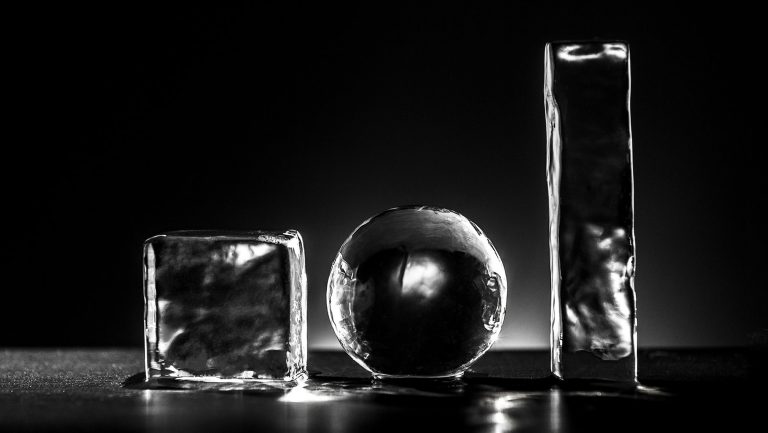
The New Business of Big Ice
A new age for ice providers is taking cubes to the next level at bars and retail outlets
Cattle Branding, for Garnishes
An electric brander, such as the type used to burn an image into leather, can be used to add a logo to a lime peel or other garnish. A bonus with this technique, says Goldstein, is “people like to watch you do this.”
Stenciling with Bitters
While not as high-tech as most of the methods above, this technique, pioneered by Don Lee, now of Existing Conditions in New York City, is worth keeping in mind. Lee introduced it at PDT, using a custom-cut acrylic stencil and an atomizer full of Angostura bitters to add the bar’s logo on top of egg-white drinks.
Some bars still use stenciling, which is inexpensive and easy to customize, but “doing stencils in high volume can be tricky,” Goldstein warns. “You need to hit [the foam] at the right angle” or you’ll end up with a meaningless smudge.

Dispatch
Sign up for our award-winning newsletter
Don’t miss the latest drinks industry news and insights—delivered to your inbox every week.
Kara Newman reviews spirits for Wine Enthusiast magazine and is the author of Shake. Stir. Sip., Nightcap, and Cocktails with a Twist (Chronicle Books).

